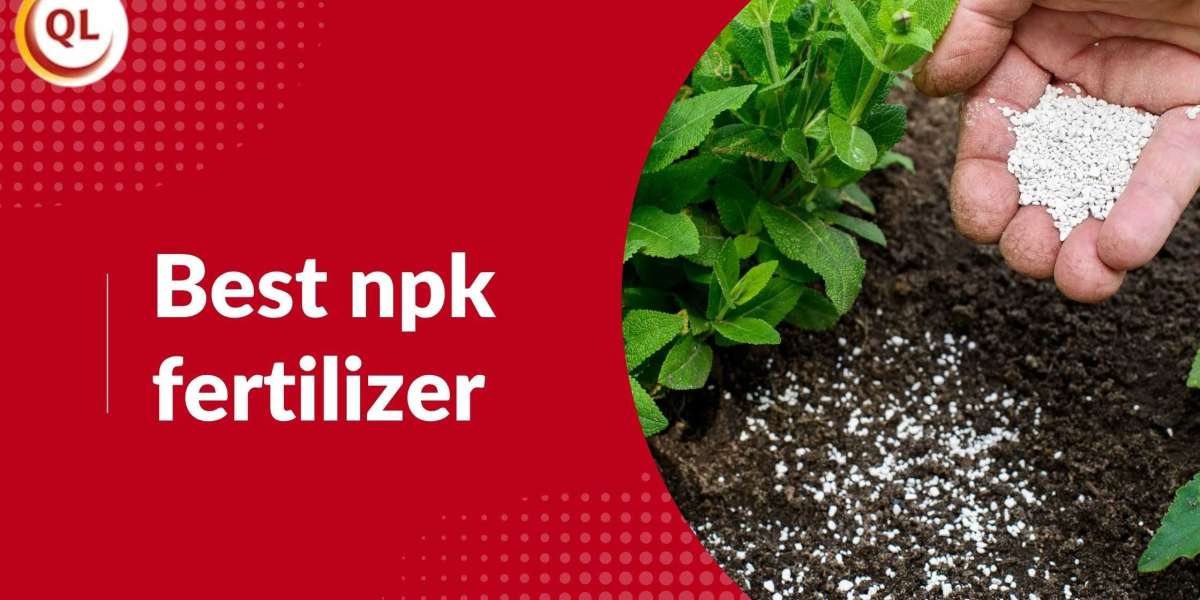Every successful farm starts with one key ingredient: healthy soil. But not all soil is the same—and neither are the fertilizers needed to support its growth. Understanding your soil type and choosing the right NPK (Nitrogen-Phosphorus-Potassium) blend is essential for unlocking maximum crop yield and long-term soil health.
At QLfarms, we specialize in crafting the best NPK fertilizer solutions that cater to the unique needs of Vietnamese farmers. As a trusted natural fertilizer supplier, our mission is to help you grow stronger crops using balanced, environmentally friendly formulations suited for different soil conditions.
In this article, we’ll guide you through various soil types and recommend the best NPK blends to use for each one.
Understanding NPK Fertilizer Basics
Before diving into soil types, let’s review the role of the three core nutrients in NPK fertilizer:
Nitrogen (N): Promotes leaf growth and is essential for vegetative development.
Phosphorus (P): Encourages strong root formation and flowering.
Potassium (K): Enhances overall plant health, disease resistance, and fruit quality.
The ratio of these nutrients can significantly impact how your plants grow. That’s why selecting the best NPK fertilizer blend depends heavily on the type of soil you’re working with.
1. Sandy Soil: Fast-Draining, Low Nutrient Retention
Characteristics:
Drains quickly
Low in organic matter
Poor nutrient-holding capacity
Recommended NPK Blend:
15-15-15 or 16-16-8
Sandy soil leaches nutrients rapidly, especially nitrogen. For this reason, a balanced NPK blend with slightly higher phosphorus and potassium is ideal to support root development and fruiting. A slow-release formula is also beneficial to reduce runoff and increase efficiency.
QLfarms Solution:
Our controlled-release 15-15-15 blend is designed to feed crops steadily, supporting vegetables like tomatoes, cucumbers, and peppers that thrive in light soils.
2. Clay Soil: Heavy, Nutrient-Rich but Poorly Drained
Characteristics:
Retains water and nutrients well
Can become compacted
Drains slowly
Recommended NPK Blend:
10-20-20 or 12-24-12
Clay soil holds onto nutrients, but its dense nature can restrict root growth and oxygen flow. A high-phosphorus and potassium blend helps strengthen roots and support overall plant structure.
QLfarms Solution:
Our 12-24-12 NPK blend improves root establishment and boosts flowering in crops like onions, garlic, and root vegetables. Combined with organic matter and proper aeration, it performs exceptionally well in clay-based soils.
3. Loamy Soil: Ideal Texture and Nutrient Balance
Characteristics:
Balanced mix of sand, silt, and clay
Good drainage and fertility
Supports a wide variety of crops
Recommended NPK Blend:
10-10-10 or 13-13-13
Loamy soil is every farmer’s dream, and a balanced NPK ratio works perfectly here. These blends support overall plant health, from roots to flowers and fruits.
QLfarms Solution:
Our multi-purpose 10-10-10 blend is a go-to option for loamy soils, providing consistent performance for a wide range of crops, including rice, beans, and fruit trees.
4. Silt Soil: Fertile but Prone to Erosion
Characteristics:
Smooth texture
Holds moisture well
Can become waterlogged or eroded easily
Recommended NPK Blend:
12-12-17 or 14-7-21
Silt soils are naturally fertile, but they benefit from NPK blends with more potassium, which improves stress tolerance and reduces susceptibility to disease—especially in crops like bananas, citrus, and leafy greens.
QLfarms Solution:
Our potassium-rich 14-7-21 formula helps improve fruit firmness and shelf life, especially in regions with heavy rain or frequent harvesting.
5. Peaty Soil: Acidic, Moist, and High in Organic Matter
Characteristics:
Retains moisture
Acidic pH
High organic content but low in minerals
Recommended NPK Blend:
20-10-10 with lime amendment
Peaty soils can benefit from high-nitrogen fertilizers to support leaf development, especially for crops like spinach, cabbage, and lettuce. Lime may be added to raise the pH.
QLfarms Solution:
Our 20-10-10 blend delivers a nitrogen boost for leafy crops, while we also offer soil conditioners to help neutralize pH imbalances naturally.
Why Choosing the Right Fertilizer Matters
Using the wrong NPK blend can lead to:
Nutrient imbalances
Poor crop performance
Increased disease risk
Wasted investment
That’s why it’s important to choose a natural fertilizer supplier like QLfarms that understands local soil conditions and provides custom-tailored solutions.
What Makes QLfarms' NPK Fertilizer the Best?
At QLfarms, we go beyond just selling fertilizers—we support farmers with:
✅ Scientifically formulated NPK blends for specific crop and soil needs
✅ Organic and sustainable ingredients that protect soil health
✅ Custom bulk orders for cooperatives and large farms
✅ Ongoing support and training on proper application techniques
Our NPK fertilizers are enhanced with organic materials and microbial inoculants for better absorption and long-term soil improvement.
Conclusion: Better Soil Needs Better Fertilizer
Every soil type has unique strengths and weaknesses. Choosing the best NPK fertilizer for your land ensures optimal crop growth, efficient nutrient use, and sustainable farming practices.
As a trusted natural fertilizer supplier in Vietnam, QLfarms is proud to offer the right NPK solutions for every soil and every farm—whether you're planting rice in the Mekong Delta or growing fruits in the Central Highlands.
Contact QLfarms today to get expert recommendations and discover the best NPK fertilizer blend for your soil. Let’s build healthier farms together—one harvest at a time.











